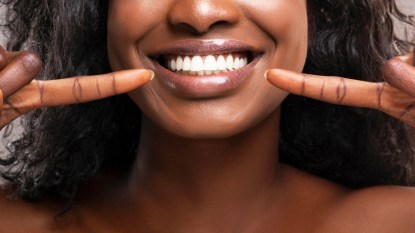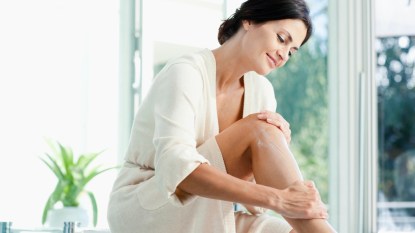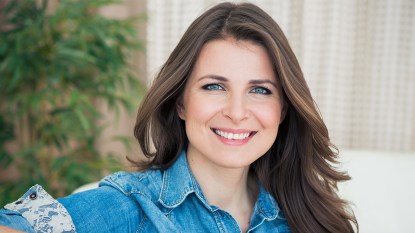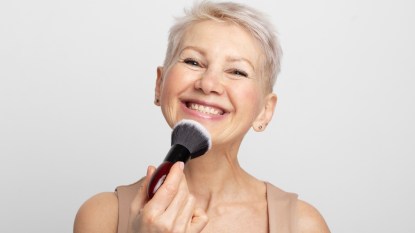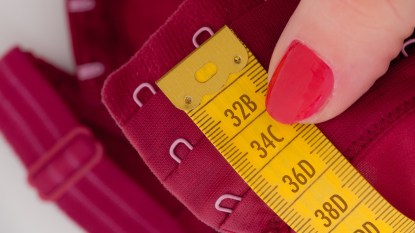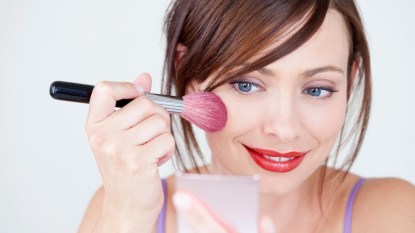How To Remove Facial Hair: Beauty Hacks for Women Over 50
It's easier than you think!
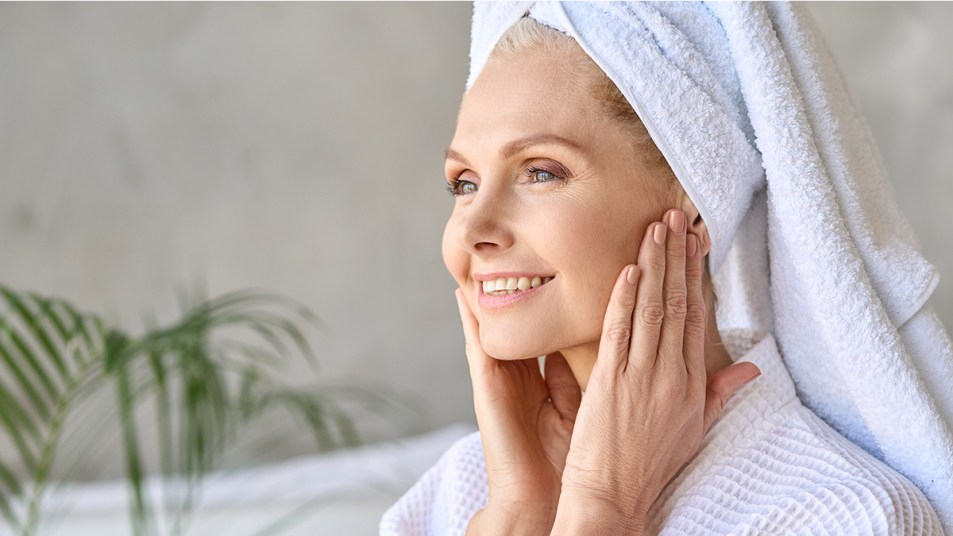
Whether you have an in-depth skincare routine or just slather on moisturizer and sunscreen before running out of the house, caring for your skin is vital as you age. That’s because women’s skin changes over time, particularly after age 40 (and again after menopause). A skincare routine that addresses age-related concerns inspires confidence and helps us tackle things like facial hair removal. Facial hair growth and unwanted hair affect most of us at some point in our lives. Fortunately, it can be handled at home. Here’s how to remove facial hair.
What’s the best way to remove facial hair?
Facial hair development is typically related to hormonal changes. That’s why it can be a common side effect of aging, as our hormones fluctuate before, during, and after menopause. Thankfully, the pesky facial hair you may find along your lip, jawline, brows, or chin is easy to manage and remove. When deciding on your method of hair removal, consider your skin type, as some skin types can be sensitive to hair removal options. Ensure, too, that you wash and exfoliate your skin carefully, to remove dead skin cells and provide easier access to hair follicles. Below is a primer on removing unwanted facial hair.
Salon Waxing
Waxing is a tried-and-true hair removal method that’s used for everything from shaping eyebrows to removing hair from larger areas like legs or arms. Waxing is easy and efficient, and guarantees — provided you effectively communicate your desired outcome to your esthetician — the look you desire. It also lasts much longer than shaving. Instead of removing just the top layer of the hair, it gets below the surface to remove the hair follicle at the root. Doing this means you can go three to four weeks between procedures. You can also expect fewer ingrown hairs and smoother skin overall.
Last but not least, waxing makes you feel pampered. While the waxing itself isn’t the best feeling, the irritation is short-lived. The sleek feel of your smooth skin is a luxury akin to the results of every other kind of pampering, from massages and facials to manis and pedis. When you wax, you’re taking care of your facial hairs, sure. But you’re also taking care of your confidence and mental health.
Wax Strips
You don’t need to spend much money to reap the benefits of waxing your facial hair. In fact, you can wax your hair at home with a waxing kit. Self-waxing kits are easy to use. All you need to do is melt the wax in the given pot, then gently apply it to the area where you want to remove the hair. Do be sure to use plenty of moisturizer beforehand — specifically a water-based, oil-free moisturizer, which will prevent skin from getting too hot or irritated. At-home waxing kits are particularly helpful in getting rid of small hairs that crop up between your regularly scheduled waxing appointments.
Shaving
Shaving is the tried-and-true method for removing body hair. Its benefits extend to facial hair removal, too. In fact, it bests other hair removal options in a number of ways. Shaving brightens the appearance of the skin by getting rid of not only the hair, but the oils and dirt below the skin’s surface as well. You’ll need to be careful, though, when shaving your face. The skin on the face is thinner than it is on the legs, and it can be sensitive and more prone to damage. Take your time when shaving facial hair, and use a men’s razor rather than your shower go-to. (Men’s razors are designed for the face and give you more control when shaving the contours of your jaw, chin, and cheeks.)
Plucking
Who hasn’t fallen prey to over-plucking? (The early ’90s were a tough time for eyebrows.) Still, tweezing is one of the best facial hair removal methods for chin hairs, nose hairs, and yes, even eyebrows. To mitigate the negative impact of plucking on your skin, follow a few simple hair removal treatment tips.
- Run a washcloth under warm water, then lay it over the area of your face where you’ll be plucking. (The warmth of the water helps to relax the skin and makes it easier for the hair follicle to come out, thus reducing the pulling and tugging required to remove the hair.)
- Isolate the hair to avoid excess skin irritation, and pull the skin taut before plucking.
- Pull the hair in the direction of its growth.
- Post-removal, moisturize the skin to help prevent ingrowns.
Laser Hair Removal
Laser hair removal is a popular method of permanent hair removal. A relatively simple process, it reduces the need for future hair management and has few side effects. Because it’s permanent, you don’t need to worry about ingrown hairs and frequent irritation of the sensitive skin on your face. (It’s basically a smooth, hair-free look without the work.) Some of the most common places for facial laser hair removal are the chin and upper lip, but because laser hair removal is safe, you can have the procedure done to any part of your skin except for the eyelids.
Hair Removal Cream
Another option for removing unwanted hair at home is hair removal cream or a depilatory cream. Products like Nair work well on the larger areas of the face where peach fuzz is common (like along the jaw) because all that’s required is applying the cream, waiting a bit, and then wiping it off. It’s efficient and — if you choose hair removal creams with soothing agents like aloe to soothe and cool the skin during the removal process — pain-free. You can also talk to a dermatologist about a prescription cream with a higher strength.
Threading
In the last decade, estheticians’ threading has become increasingly popular. In fact, it’s a process that dates back centuries in India and Central Asia. As its name suggests, threading uses a thin thread, which is doubled over itself, to roll over the area of hair you wish to remove. It’s this rolling that captures the excess hair in the space between the doubled over piece of thread.
There are many benefits to removing unwanted facial hair via threading. To start, threading is quick and efficient. Rather than removing hairs one by one, which is the standard for the plucking process, threading actually removes several hairs at once. Threading is also very precise. Threading experts are incredibly well-practiced, and can even reduce the irritation and pain associated with hair removal.
Dermaplaning
Dermaplaning can be beneficial to your skincare routine for a number of reasons. By removing the top layer of skin, it reduces the appearance of wrinkles, scars, and damage, thus revealing the smooth skin below.
Additionally, you can use your derma-planer, which is a small, handheld blade, to remove fine hairs and the peach fuzz that often grows like sideburns along the cheeks. It’s not like shaving, though, which only removes hair from the surface of the face. Rather, dermaplaning removes all the buildup, oils, and dead skin cells that cause skin to appear damaged, resulting in a brighter, more refreshed look. The tool is easy to use, and the small size means you can easily address the large and small areas of facial hair.
Remove Hair Today
Even though it’s common for women to have facial hair, its appearance can hinder self-confidence. The good news is that there are several ways to remove excess hair from the chin, cheeks, and brows, both at home and with the support of your dermatology or esthetician team.
To choose the hair removal method that’s right for you, consider your skin care needs. There are several types of removal, from laser treatments and waxing to plucking and threading, each with their own pros and cons. Most, however, exfoliate skin and yield a brighter complexion.



